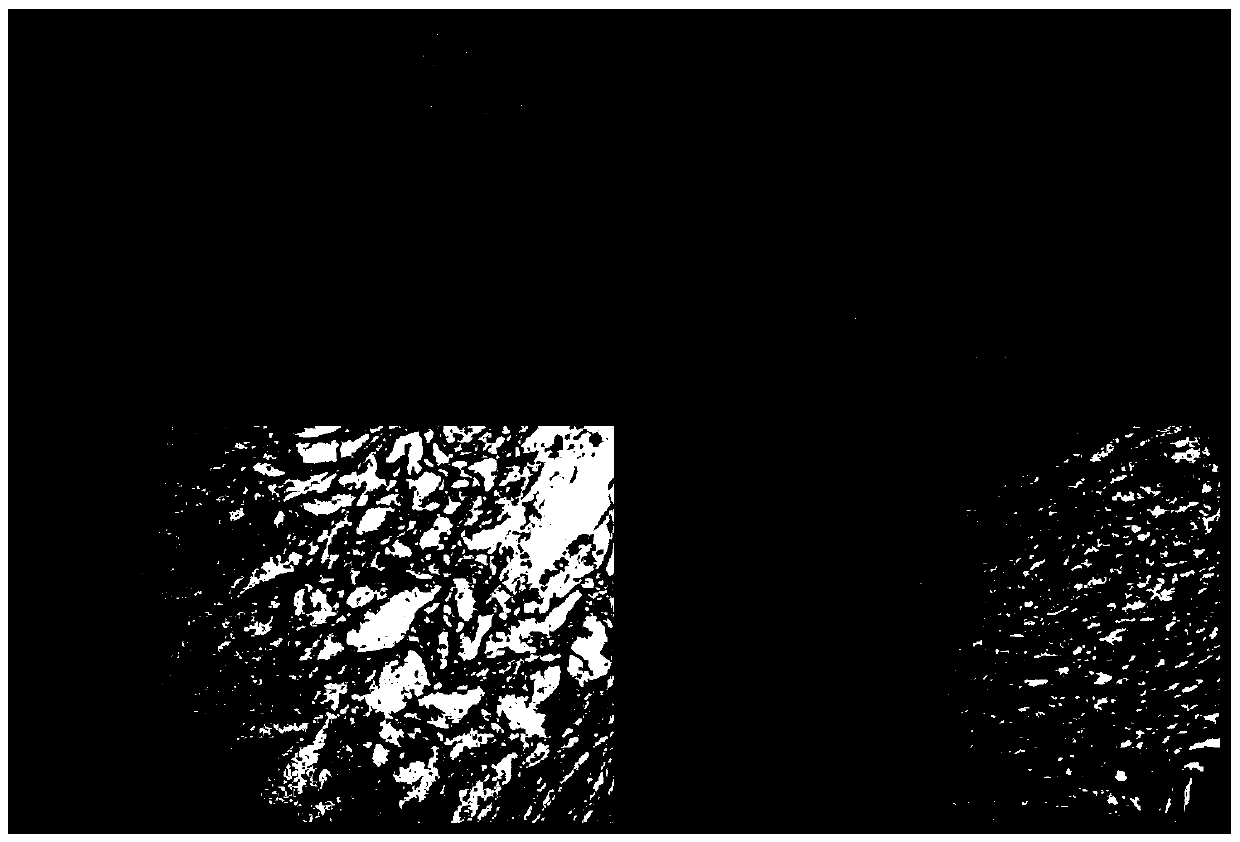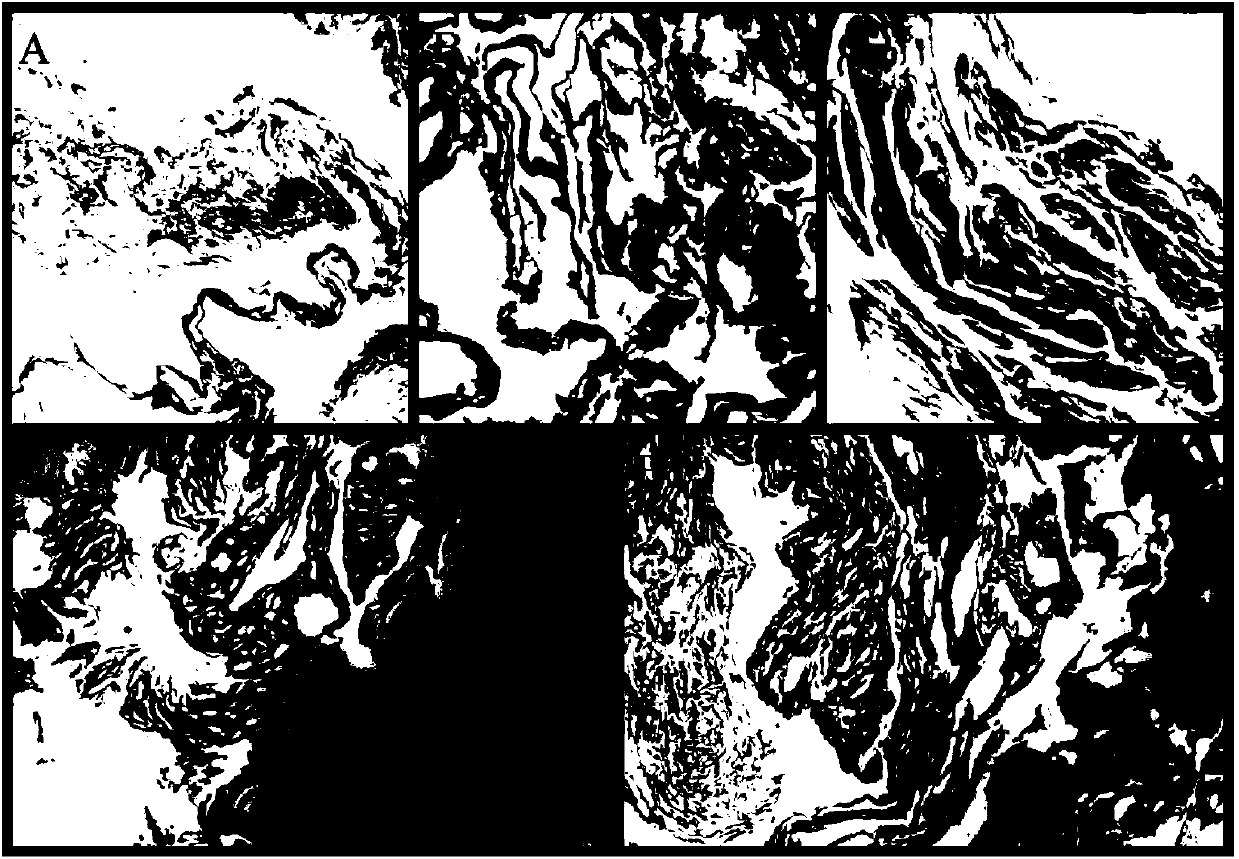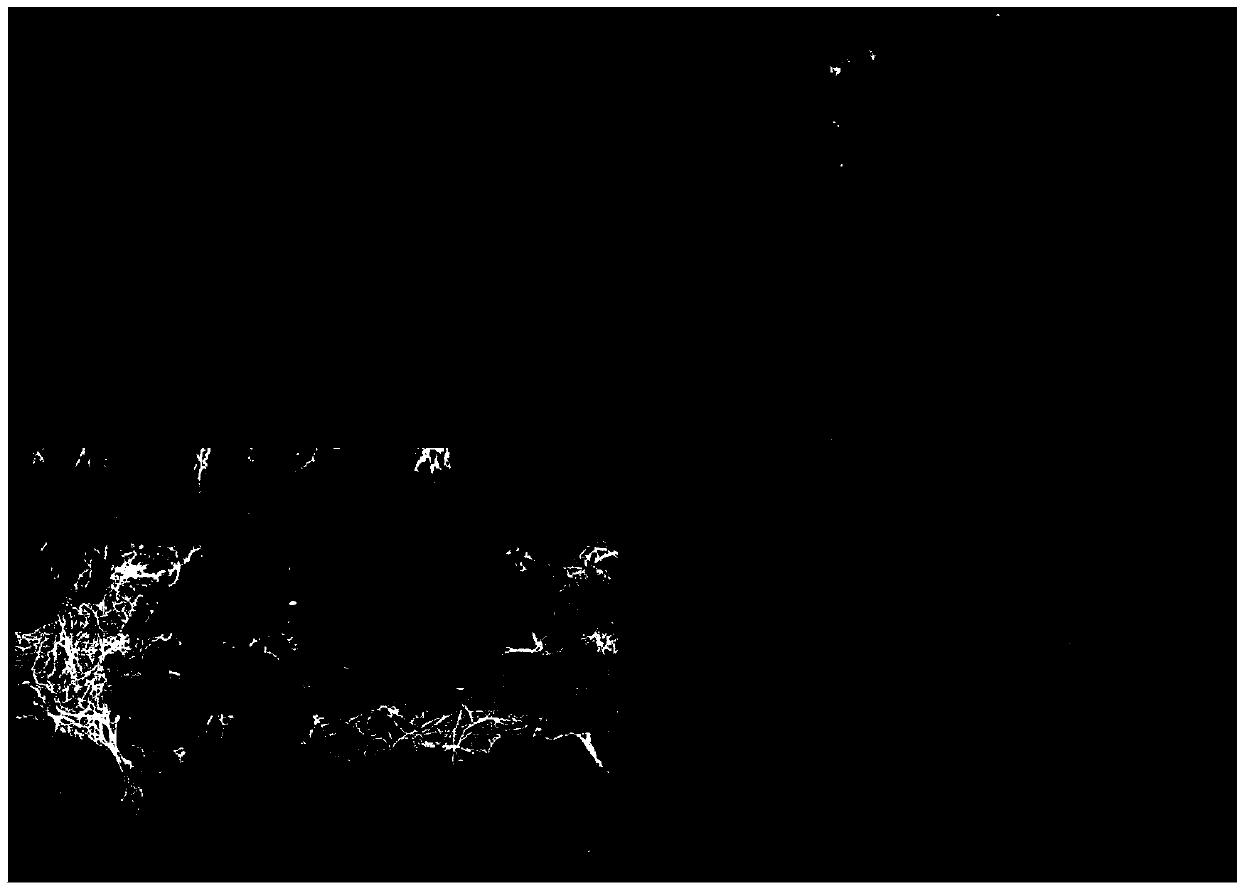Human colon cancer extracellular matrix in-vitro model and preparation method thereof
A colon cancer cell and extracellular matrix technology, applied in the field of basic medical research, can solve the problems of inability to get rid of, cannot truly reflect the characteristics of ECM changes, and cannot accurately reflect the role of ECM cells, so as to reduce the time-consuming process and simplify the process flow Effect
- Summary
- Abstract
- Description
- Claims
- Application Information
AI Technical Summary
Problems solved by technology
Method used
Image
Examples
Embodiment 1
[0035] Example 1: Preparation of an extracellular matrix model of human colon cancer cells
[0036] 1. Pretreatment of colon cancer tissue samples
[0037] A total of 30 cases of colorectal cancer specimens and corresponding normal tissues of stages I to IV were collected. The specific case information is shown in Table 1. Fresh colon cancer tissue with a size of 1 cm×1 cm×1 cm was taken and washed 3 times with pure water. The fresh tissue refers to surgically removed tumor tissue within 4 hours of in vitro.
[0038] 2. Sterilization
[0039] Sterilization by low-concentration peracetic acid-ethanol solution method, this step is carried out in a constant temperature shaker, wherein the volume percentage of peracetic acid is 0.1%, the sterilization time is 1h, the shaking frequency is 200rpm, and the temperature range at 4-40°C, then wash in phosphate buffer for 2-5 times, each time for 15 minutes, check the pH value of the washed phosphate buffer, when the pH reaches 6.5-7....
Embodiment 2
[0049] Example 2: Detection of porosity of the extracellular matrix of acellular colon cancer cells prepared in Example 1
[0050] The porosity of the material was determined by mercury intrusion porosimetry. Result: The porosity is not less than 85%.
Embodiment 3
[0051] Example 3: Histological detection of the extracellular matrix of acellular colon cancer cells prepared in Example 1
[0052] 1) Observation with optical microscope: Method: The paraffin-coated material was stained with hematoxylin-eosin, and observed with an inverted phase-contrast microscope. Results: No cells and cell debris remained, collagen fibers were well preserved, and with the increase of colon cancer stage, the content, density and distribution of collagen fibers in the extramatrix of colon cancer cells increased, as shown in figure 1 shown.
[0053] 2) Observation of ultrastructure. Results: The material has a porous structure with uniform pore size, the average pore size is 200um, and the porosity is greater than 85%. With the increase of colon cancer stage, the porosity and surface roughness of colon cancer cell extramatrix increase, as shown in figure 2 , image 3 shown.
[0054] 3) Masson staining was used to observe the configuration characteristics...
PUM
| Property | Measurement | Unit |
|---|---|---|
| porosity | aaaaa | aaaaa |
Abstract
Description
Claims
Application Information
 Login to View More
Login to View More - R&D
- Intellectual Property
- Life Sciences
- Materials
- Tech Scout
- Unparalleled Data Quality
- Higher Quality Content
- 60% Fewer Hallucinations
Browse by: Latest US Patents, China's latest patents, Technical Efficacy Thesaurus, Application Domain, Technology Topic, Popular Technical Reports.
© 2025 PatSnap. All rights reserved.Legal|Privacy policy|Modern Slavery Act Transparency Statement|Sitemap|About US| Contact US: help@patsnap.com



